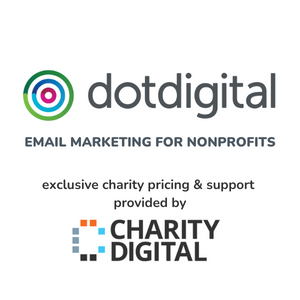Insights
INSIGHTS
All Topics
How to run an effective focus group
We explore how to run effective focus groups, with top tips on planning a focus group, how to act during the session, and steps to take after the focus group
Focus groups are a great way to gather insightful, in-depth information. That could be anything from people sharing their experiences of a service you provide, to supporters explaining what they think of your new website design, or a group of colleagues discussing how the organisation could better support their work-life balance.
Focus groups:
- Are a cost-effective way to gather input from a few people at once, and are less time consuming than running one-to-one interviews
- Give you the chance to dig deeper on any issues that come up in the session and ask follow-up questions then and there
- Allow you to observe participants’ tone and body language – information you wouldn’t have, for example, by sending out a survey or questionnaire)
- Can spark new ideas or uncover different viewpoints through members discussing the topic together and allows you to hear participants’ opinions in their own words
Here are some hints for getting the most out of your focus group, starting with how to plan a session.
How to plan a focus group session
Below is a step-by-step guide to planning a focus group session.
- First things first, be clear about your objectives and use those objectives to shape questions for the focus group
- Choose two facilitators (having two people is helpful, as one can take notes). Ideally the facilitators will have experience of running group sessions, as well as the topic being discussed
- Write your questions, making sure they are unbiased and neutral. You might consider different ways to phrase a question to make sure every member of the group understands what you’re asking
- Invite people to participate (around six to ten people is ideal). Think about who you want in the room in terms of experience and demographics
- Consider if there are incentives you can offer (for example, travel expenses or refreshments). When you send out the invitation be clear about this, along with what the participants will need to do, and how the findings will be used. If you are planning on recording the session, then make this clear up front
- If you’re holding the group in-person, choose a venue that is accessible. If it will be remote, make sure everyone has the information they need to easily login
- You’ll probably need around one to two hours per session
How to act during the focus group session
Below is a step-by-step guide on how to act during a focus group session.
- Put a few ground rules in place to create a safe and positive space for sharing. Those rules might include: confidentiality, not speaking over each other, and putting phones away
- If the group members haven’t met before, you could have an ice-breaker – keep it short, simple, and inclusive
- Record the session (if you do so, ask permission first). Ensure one facilitator take notes as backup, also noting any body language shifts or if/when someone’s mood changes. Test any recording equipment before the session starts and make sure any batteries are charged
- Keep the group focused on the topic being discussed. If conversations wander too far away, then bring it back to the topic
- Make sure everyone gets a chance to speak. That might mean managing anyone who is taking up a lot of time, or encouraging quieter members to have their say
- Clarify anything that isn’t clear and ask for extra information if it will help your understanding. You might want to summarise what you’ve heard from someone and ask if you’ve interpreted it correctly
- Stay open to feedback even if it’s negative. Honest feedback is the most valuable and will help to shape any project, service or product that you’re working on for the better
- Have some follow-up questions up your sleeve. For example: “Can you tell me more about that?” or “How did that impact you?”. One of the benefits of focus groups is that you get to dig deep, so be prepared to ask more questions
- Look out for groupthink (that’s when people agree with the group’s opinions, rather than offering their own). One way to avoid this is to suggest people write down key words in answer to a question before sharing with the group
After the focus group
Below is a step-by-step guide of what to do after the focus group.
- At the end of the session, hand out any vouchers, thank people for their time and explain what will happen with the findings. Make sure participants leave feeling heard and respected
- As soon as possible after the session, take some time to review the notes and analyse findings. If there were two facilitators it’s helpful to do this together as one may have picked up nuances the other hasn’t
- If you’ve told participants they’ll be updated on progress, make sure they are. For example, if you’ve been speaking with staff about what benefits they’d like, update participants when you know which are being carried forward
For more information on focus groups
- Citizens Advice’s guide, ‘How to run focus groups guide’, includes templates
- NCVO has a helpful online guide ‘Planning and running focus groups’
- Mind shares its ‘Tips for discussion and focus groups’
Mary Wessel
More on this topic
Featured Products
Related Videos
Our Events
Q&A session: An introduction to Microsoft Copilot
Join us on the 14th of May for our Q&A session. It will provide a whistlestop tour of Microsoft Copilot’s key capabilities, how they can help charities, and answer all your burning questions around Microsoft’s AI service.
We use cookies so we can provide you with the best online experience. By continuing to browse this site you are agreeing to our use of cookies. Click on the banner to find out more.


















